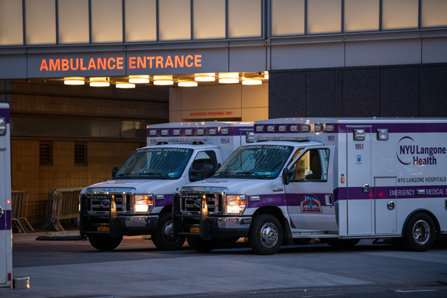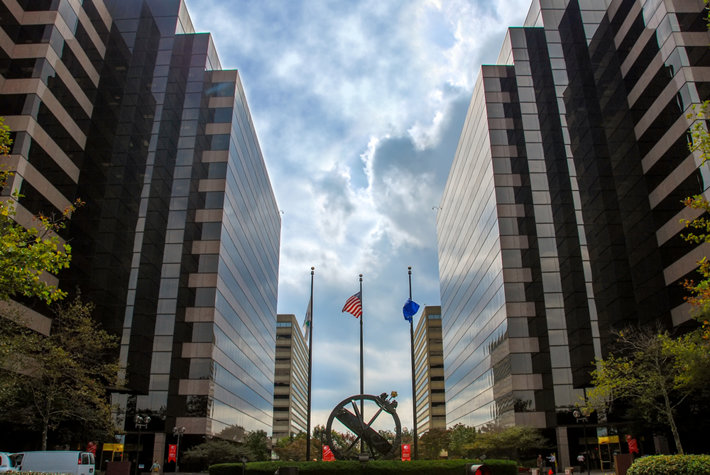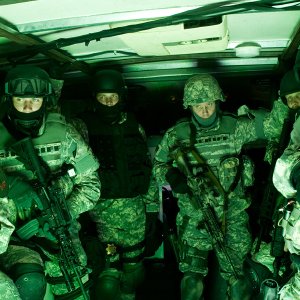Just What We DON’T Need: A New and Deadly Opioid

In the fight to save people from addiction, we try to prevent youth from starting drug abuse, we build rehab centers to bring people back to life, and we do our best to get illicit, damaging, deadly substances off the market.
Getting these illicit substances off the market can turn into an international game of “whack-a-mole.” Why? Because new and temporarily legal drugs often show up as soon as previously legal drugs get banned. As we try to drive one substance out of our drug supplies, it’s all too frequent for replacement drugs that are still legal to show up.
In the latest manifestation of this phenomenon, as soon as America got China to outlaw the manufacture or sales of all types of fentanyl, a new type of opioid showed up in American drug supplies: isotonitazene.
What Type of Drug Is Isotonitazene?
The World Health Organization notes that isotonitazene is an opioid that’s 500 times stronger than morphine. That easily places the danger of abusing isotonitazene on a par with the danger of consuming drugs from the fentanyl family.
It is usually found as a yellow, brown or off-white powder. It is a synthetic drug which means it is made in a lab and does not rely on opium poppies or any other plant for manufacture. As a light-colored powder, it is easily added to heroin supplies. It can also be processed by drug dealers into pill forms that mimic OxyContin or Dilaudid.
In 2020, the European Monitoring Centre for Drugs and Drug Addiction (EMCDDA) reported that this drug was being sold online by a Chinese vendor. The product appeared as a powder, nasal spray or pre-made counterfeit pills. It was also found in liquid form in Germany.
It was developed in 1957 as a painkiller. Because of its addictiveness and ability to fatally suppress breathing, it was never approved for use as a painkiller in either Europe or America.
Not Illegal, Yet

But neither had isotonitazene yet been added to lists of banned drugs. Early reports of this drug being found in illicit drug supplies began to appear in late 2019.
In America, isotonitazene was added to a list of controlled substances on an emergency basis by the Drug Enforcement Administration (DEA) on August 20, 2020. By September, isotonitazene had been involved in 19 deaths in the US.
In May 2020, the EMCDDA issued a Risk Assessment Report that got the ball rolling to add this drug to lists of banned drugs in the European Union. The EMCDDA stated that “isotonitazene may pose health or social risks at EU [European Union] level.” By the time this report was published, there had been five deaths from this drug in Germany, the UK and Canada.
By September 2020, the European Commission announced that it was banning the manufacture and sale of isotonitazene.
Why Would Isotonitazene Be Popular with Drug Traffickers?
A drug that gets people high, is addictive, and is not on a list of banned drugs is like catnip to a chemist involved in the manufacture of illicit drugs. This drug can temporarily be sold as a “legal high” to anyone concerned about being arrested with the drug.
For as long as it takes legislative and law enforcement organizations to get the drug categorized as a banned substance, there are no significant penalties for manufacturing, transporting, selling or possessing it.
What it Takes to Get Drugs Off the Market
Legislatures and governmental agencies around the world are always playing catch-up with new drugs that are introduced to the market. As quickly as possible, they try to identify new illicit substances that show up and get legislation drafted to make it illegal to possess or sell this drug.
As soon as this kind of legislation is passed in the US, it’s up to the Drug Enforcement Administration or state and local agencies to seize the drug when found and prosecute traffickers and dealers.
However, it’s a laborious and lengthy process in both the US and the EU.
Multiple Layers of Laws Make Drug Enforcement Complicated

In general, these efforts to get drugs off the market and out of the public's hands are referred to as drug enforcement. At the federal level, these actions are spearheaded by the DEA. As noted above, the DEA has the power to temporarily list a drug as a controlled substance by emergency order. That gives federal law enforcement personnel the ability to seize the drug and prosecute manufacturers and sellers.
However, until state laws catch up, state and local law enforcement officers may not have the same power. It’s a tricky, multi-layered problem that endangers lives until all the levels of drug enforcement get on the same page.
The DEA put this drug on Schedule 1, meaning that it has the potential for abuse and has no approved medical use.
As of this writing, a law to ban this drug has been introduced (but not passed) at the federal level, and the State of Ohio has added isotonitazene to its list of controlled substances.
Who Is At Risk?
Essentially, anyone who is misusing or addicted to illicit drugs is at risk. Here’s why:
- In Illinois and Indiana, it was found mixed with cocaine;
- As noted above, it is being shipped from China pre-formed into prescription opioids, so anyone who abuses pills is at risk;
- In Germany, it was found in a sample of a synthetic cannabinoid;
- In Latvia, it was found combined with fentanyl;
- In Wisconsin, police seized a bag of isotonitazene mixed with heroin and an illicit type of benzodiazepine.
Because it is found in so many different supplies, it’s a very difficult drug to avoid.
Why Are We Seeing Isotonitazene on the Market Now?
Possibly because of that 2019 ban by the Chinese government on the production of all drugs in the fentanyl family, mentioned at the beginning of this article, isotonitazene is now being marketed. Before this ban, dozens of forms of fentanyl could legally be manufactured in China. They could then be shipped out of the country with false documentation.
In coverage of the news of this ban, National Public Radio noted that this change resulted “in a significant reduction in the country’s illicit fentanyl trade.”
Drug traffickers want to maintain the same level of sales, so what they may have done at that point was search drug research and development records for a drug that was never approved for sale, but that was never banned from production either. By converting their manufacturing processes over to this new drug, they could keep sales going in a more-or-less legal fashion.
This process has occurred hundreds of times. The EMCDDA noted that between 2008 and 2020, more than eight hundred new psychoactive substances appeared on the illicit market. Most of these drugs were created or went into manufacture just to have “legal highs” to sell—for a while, at least—until legislatures and law enforcement could catch up.
Sources:
- https://www.brookings.edu/wp-content/uploads/2020/07/8_Felbab-Brown_China_final.pdf
- https://abcnews.go.com/Health/deadly-opioid-iso-implicated-19-overdoses-us-china/story?id=72730629
- https://www.npsdiscovery.org/wp-content/uploads/2019/11/Public-Alert_Isotonitazene_NPS-Discovery_111919-1.pdf
- https://www.who.int/docs/default-source/controlled-substances/43rd-ecdd/isonitazene-43rd-final-complete-a.pdf?sfvrsn=c98d9c9_2
- https://www.deadiversion.usdoj.gov/fed_regs/rules/2020/fr0618.htm
- https://www.emcdda.europa.eu/system/files/publications/13402/emcdda-Risk-Assessment-Report-on-isotonitazene.pdf
- https://www.deadiversion.usdoj.gov/fed_regs/rules/2020/fr0820_2.htm
- https://abcnews.go.com/Health/deadly-opioid-iso-implicated-19-overdoses-us-china/story?id=72730629
- https://www.caymanchem.com/news/isotonitazene-the-latest-substance-to-be-banned-in-the-european-union
- https://www.usatoday.com/story/news/nation/2020/05/18/has-new-designer-opioid-caused-overdose-deaths-ohio/5212580002/
- https://www.npr.org/2020/11/17/916890880/we-are-shipping-to-the-u-s-china-s-fentanyl-sellers-find-new-routes-to-drug-user
- https://www.emcdda.europa.eu/system/files/publications/13464/20205648_TD0320796ENN_PDF_rev.pdf
- https://www.govtrack.us/congress/bills/116/s4648
Reviewed by Claire Pinell, ICAADC, CCS, LADC, RAS, MCAP, LCDC-I


 ®
®